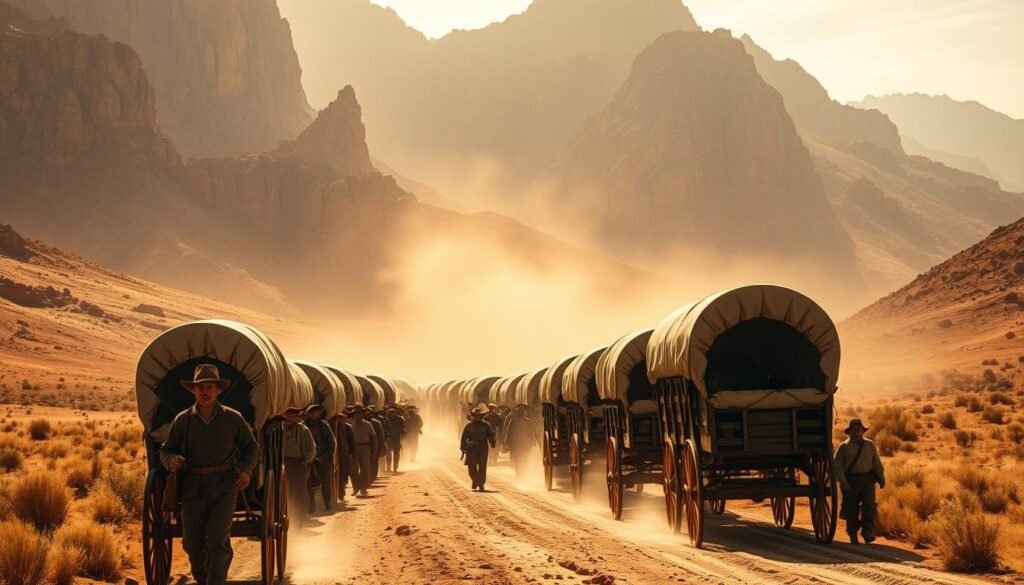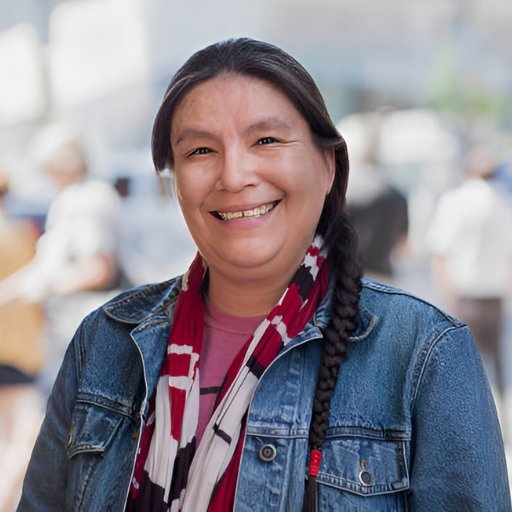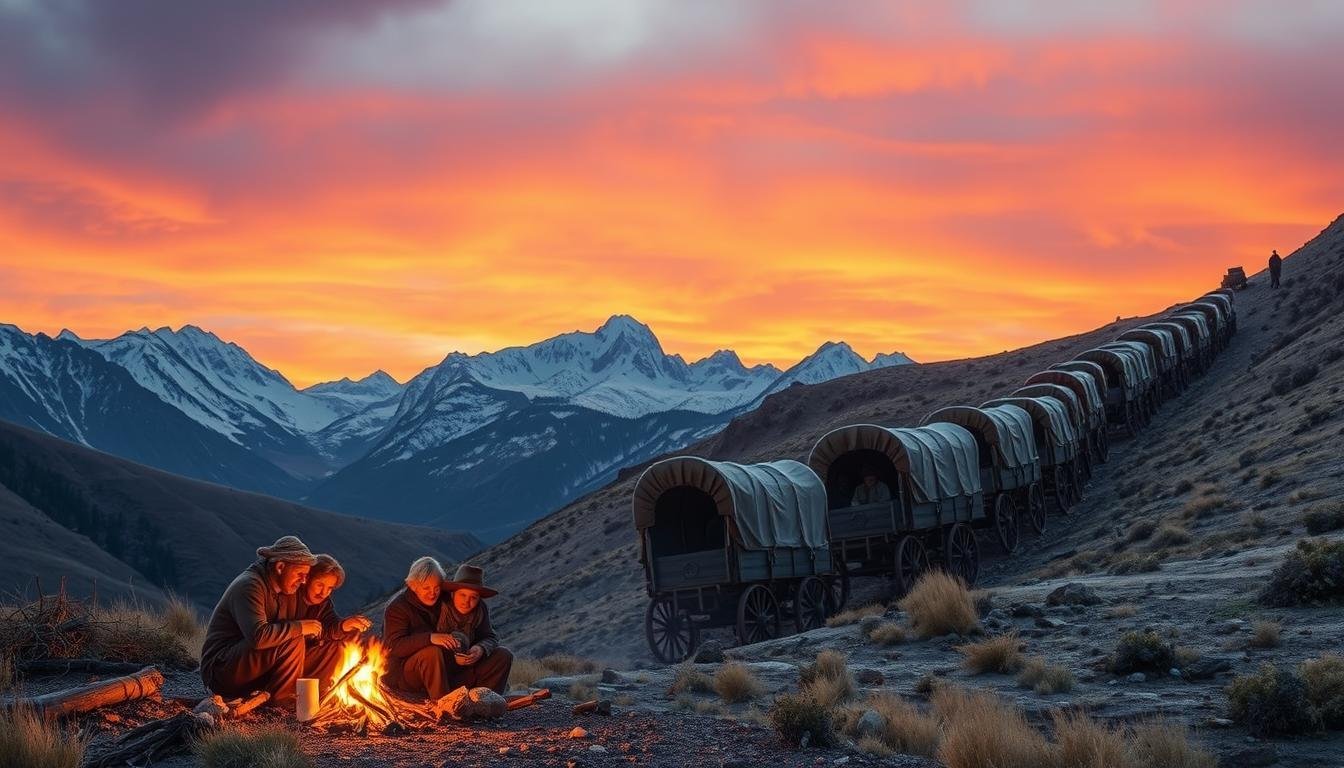Last updated on October 20th, 2025 at 02:28 pm
Why Mormons Moved to Utah? You are about to embark on a journey through one of the most pivotal events in American religious history – the Mormon migration to Utah.
This journey was marked by numerous challenges. The Mormon pioneers, driven by their faith and the desire for religious freedom, traversed the American wilderness.
Their perseverance ultimately led them to the Salt Lake Valley. There, they established a new home, shaping the course of Utah history.
In this section, we’ll explore the historical context and significance of their journey. We’ll understand the trials they faced and how they overcame them.
Contents
- 1 The Early Mormon Church and Persecution
- 2 What Difficulties Led Mormons to Move to Utah
- 3 Brigham Young’s Vision of a Western Settlement
- 4 The Mormon Exodus: Journey to the Salt Lake Valley
- 5 Building Zion in the Desert
- 6 Conclusion: Why Mormons Moved to Utah?
- 7 FAQ
- 7.1 Why did the Mormons migrate to Utah?
- 7.2 Who led the Mormon pioneers to Utah?
- 7.3 What challenges did the Mormon pioneers face during their journey to Utah?
- 7.4 How did the Mormons establish a viable community in Utah?
- 7.5 What was the significance of the Mormon migration to Utah?
- 7.6 How did the Mormon pioneers travel to Utah?
- 7.7 What was the role of Brigham Young in the Mormon migration to Utah?
- 7.8 What were some of the economic challenges faced by the Mormon community before migrating to Utah?
- 7.9 How did the Mormon pioneers interact with Native American tribes during their journey?
The Early Mormon Church and Persecution
The Church of Jesus Christ of Latter-day Saints was founded by Joseph Smith. It faced intense persecution from the start. The church began in the early 19th century and quickly gained followers. However, its beliefs and practices were met with hostility and violence.
Early Challenges and Persecution
The early Mormon Church faced many challenges. These included religious intolerance and social exclusion. Members were often shunned by their communities. In some cases, they were even attacked on their homes and churches. [Why Mormons Moved to Utah?]
Some key events that highlight the persecution include:
- The burning of the St. Louis Luminary, a newspaper that supported the Mormon cause.
- The destruction of the Nauvoo Temple in Illinois, a significant religious site for Mormons.
- Violent confrontations in Missouri, which led to the expulsion of Mormons from the state.
These events were crucial in shaping the early church. The leadership, first under Joseph Smith and later under Brigham Young, was key. They guided the community through these hard times.
The persecution had a deep impact on the church’s development. It made the members stronger and more united. The church’s response to adversity, including its migration to Utah, shows its strength and determination.
Understanding the early challenges and persecution faced by the Mormon Church is important. It helps us see why they migrated to Utah. This period was marked by significant events and figures that still influence the church today.
What Difficulties Led Mormons to Move to Utah
The Mormons decided to move to Utah due to persecution, economic troubles, and feeling isolated. You might wonder what made their situation so bad.
The constant persecution, including the murder of Joseph Smith, was a big reason. The quest for religious freedom was a key reason for their move. [Why Mormons Moved to Utah?]
Economic and Social Challenges
The Mormon community struggled with economic problems and felt isolated. Here are some of the main challenges they faced:
| Challenge | Description | Impact |
|---|---|---|
| Economic Hardship | Financial troubles because of persecution and forced migration [Why Mormons Moved to Utah?] | Less economic stability and security |
| Social Isolation | Being excluded and marginalized by others | More loneliness and feeling disconnected |
| Persecution | Violence and harassment because of their beliefs | Loss of life, property, and safety |
The Mormons faced many challenges that led them to Utah. The promise of a more welcoming place in Mexican territory was attractive.
The Mormons’ move was not just about money or feeling alone. They also wanted religious freedom and a place to live their values.
The Mormon migration to Utah was complex. It was driven by many reasons that made their old life unbearable. [Why Mormons Moved to Utah?]
Brigham Young’s Vision of a Western Settlement
Brigham Young had a big dream for the Mormon Church. He wanted to move to the Intermountain West. This was a big change for the church, and Young was key in making it happen.
Young didn’t decide to move without thinking. He planned everything carefully. He picked a great place and got the Saints ready for the long journey.
The Decision to Migrate West
Young wanted a safe place for Mormons to live. He dreamed of a Mormon state in the West. It would be a place where they could live freely and thrive.
| Key Factors | Description | Impact |
|---|---|---|
| Leadership | Brigham Young’s strong leadership guided the Mormon community. | Unified the community and facilitated the migration. |
| Location | Selection of the Salt Lake Valley as the settlement location. | Provided a suitable environment for establishing a new community. |
| Preparation | Preparation of the Saints for the journey and settlement. | Ensured the survival and success of the pioneers. |
The journey was tough for the Mormon pioneers. They faced bad weather and other challenges. But Young’s leadership kept them going. They made it to the Salt Lake Valley and built a strong community.
The Mormon migration to Utah was a huge success. It showed how strong Young’s vision and leadership were. His work helped shape the Mormon Church’s history. [Why Mormons Moved to Utah?]
The Mormon Exodus: Journey to the Salt Lake Valley
The Mormon exodus to the Salt Lake Valley showed the pioneers’ strong faith and hard work. You’ll learn about the tough times they faced and how they worked together to make it.
Challenges Faced During the Journey
The journey to the Salt Lake Valley was tough. They had to deal with bad weather and sickness. The pioneers had to be resilient to get through it.
The pioneers used handcarts and wagons to cross the rough land. They set up a system to help each other, giving aid and supplies on the way.
| Challenge | Description | Impact |
|---|---|---|
| Harsh Weather | Extreme temperatures and weather conditions | Health risks and travel delays |
| Disease | Outbreaks of cholera and other illnesses | Loss of life and weakened community |
| Native American Encounters | Interactions with Native American tribes | Varying outcomes, from hostility to aid |
Thinking about the Mormon exodus shows how important faith and determination were. Their journey to the Salt Lake Valley helped start a thriving community.

Building Zion in the Desert
When the Mormons arrived in the Salt Lake Valley, they had a big goal. They wanted to create a thriving community. First, they needed a reliable source of water, essential in the dry desert.
Next, they started building homes, temples, and other important structures. They worked together to make a community that was both practical and spiritually uplifting. The temple was especially important, as it was a place for worship and coming together.
Agricultural and Infrastructure Development
The Mormons used new farming methods to make the land productive. They built irrigation systems to bring water from the mountains to their crops. This allowed them to farm the land successfully.
- Irrigation systems were constructed to support agriculture.
- Crops were carefully selected to thrive in the local climate.
- Community members worked together to build and maintain infrastructure.
Building a strong community was key to their success. They set up a fair system of governance and social programs. These helped everyone feel united and work together.
As the community grew, so did its needs. The Mormons created a fair system of governance. This ensured everyone’s needs were met. [Why Mormons Moved to Utah?]
Their hard work and teamwork turned the Salt Lake Valley into a thriving settlement. This settlement became the base of their religious community.
Conclusion: Why Mormons Moved to Utah?
You’ve learned about the Mormon pioneers’ journey to Utah. They faced many challenges but kept going. Their story is a big part of Utah’s history.
The pioneers built a strong community. They changed American culture and helped the West grow. Their quest for freedom shows how strong the human spirit can be.
Thinking about the Mormon migration shows its wide impact. It helped Utah and the country grow in tolerance and community. The Mormon migration’s story is a key part of Utah’s past. It still inspires and teaches people today.
See Also: Exploring the Mormon Church’s Stance on Cremation
FAQ
Why did the Mormons migrate to Utah?
The Mormons moved to Utah for religious freedom. They wanted to escape persecution in places like Illinois and Missouri.
Who led the Mormon pioneers to Utah?
Brigham Young led the Mormon pioneers to Utah. This was after Joseph Smith, the church’s founder, died.
What challenges did the Mormon pioneers face during their journey to Utah?
The pioneers faced tough weather, diseases, and Native American tribes. They traveled to the Salt Lake Valley.
How did the Mormons establish a viable community in Utah?
They found water, built homes and temples, and farmed the land. These efforts made Utah a thriving community.
What was the significance of the Mormon migration to Utah?
The migration was a key event in American religious history. It showed the Mormons’ quest for freedom and their community’s strength.
How did the Mormon pioneers travel to Utah?
They used handcarts and wagons. Some also rode oxen-drawn carts or horses. [Why Mormons Moved to Utah?]
What was the role of Brigham Young in the Mormon migration to Utah?
Brigham Young was key. He took over after Joseph Smith and planned the move to the Salt Lake Valley.
What were some of the economic challenges faced by the Mormon community before migrating to Utah?
They struggled with poverty and financial issues. This led them to seek a better life in Utah. [Why Mormons Moved to Utah?]
How did the Mormon pioneers interact with Native American tribes during their journey?
They had both hostile and peaceful interactions with Native American tribes. There were times of conflict and trade.

Ramona Pearson from the USA is an experienced religious researcher and writer with over 10 years studying Mormon history, beliefs, and culture. She creates accurate, insightful content to educate and inform curious readers worldwide.

